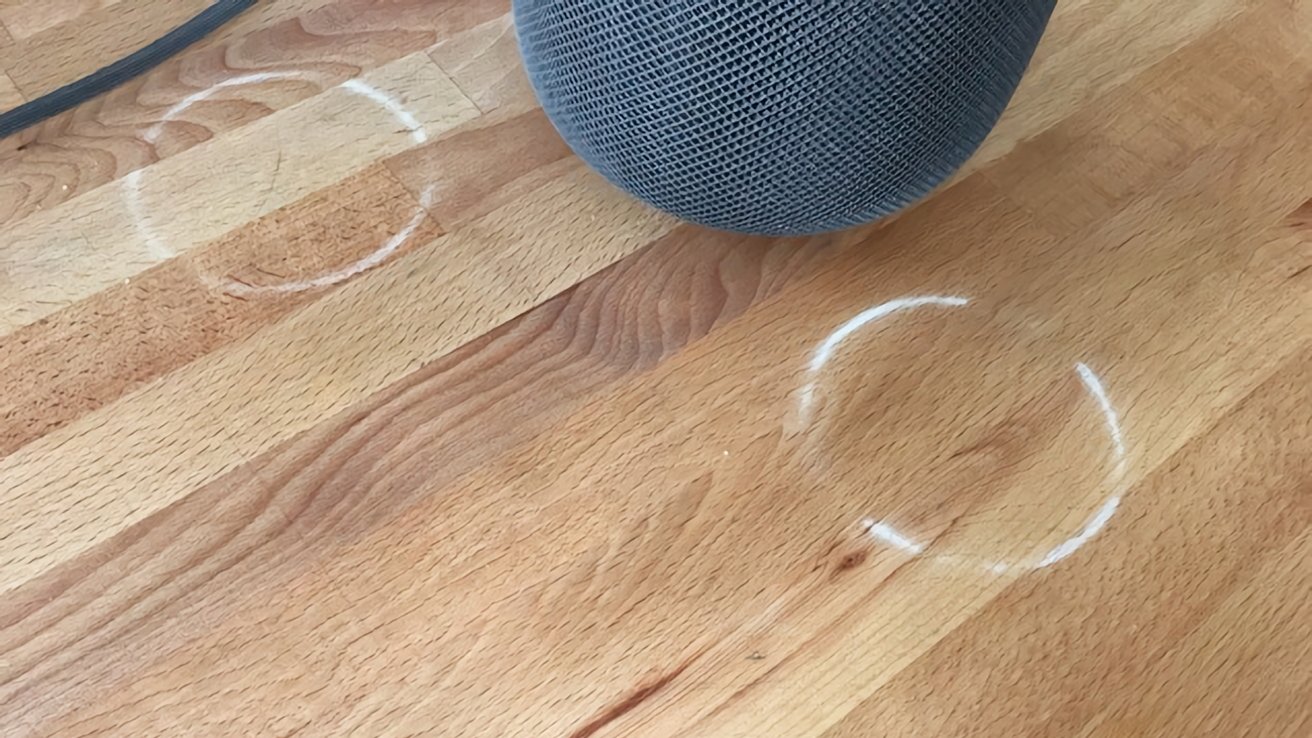
New HomePod still leaves rings on finished wood surfaces
HomePod has a silicone base for vibration dampening, but this material can react with some wood finishes that will leave a white ring behind.
Users were quick to discover damaged surfaces under the original HomePod in 2018, and the problem that caused it hasn’t changed. The speaker uses a silicone base to absorb vibrations from its large 4-inch woofer, which can chemically interact with some surfaces.
Early reviews have already confirmed that the white ring phenomenon hasn’t changed with the new HomePod. It isn’t an issue with the HomePod mini, however, since the base is made from a plastic material.
Apple has support documentation on where to place the HomePod, and lays out the reasoning behind the white ring phenomenon. Basically, direct placement on finished wood surfaces isn’t recommended.
It is not unusual for any speaker with a vibration-damping silicone base to leave mild marks when placed on some wooden surfaces. The marks can be caused by oils diffusing between the silicone base and the table surface, and will often go away after several days when the speaker is removed from the wooden surface. If not, wiping the surface gently with a soft damp or dry cloth may remove the marks. If marks persist, clean the surface with the furniture manufacturer’s recommended cleaning process. If you’re concerned about this, we recommend placing your HomePod on a different surface.
Apple’s note on placement isn’t exactly helpful when seeking alternatives. Users can rely on other means like stands, mounts, or even just basic cloths or coasters. As long as the speaker isn’t making direct contact with the wood, it is fine.
Shockproof coasters are inexpensive and provide a minimalistic way to keep the HomePod off of a wooden surface. There is also the option of wall mounting the HomePod, or even using a floor stand.

